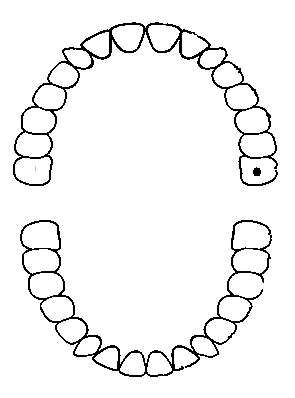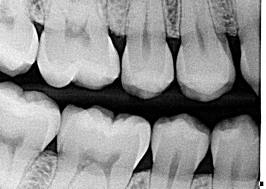






 |  |  |  |  |  |  |



1 | 2 | 3 | 4 | 5 | 6 | 7 | 8 | 9 | 10 | 11 | 12 | 13 | 14 | 15 | 16 |
32 | 31 | 30 | 29 | 28 | 27 | 26 | 25 | 24 | 23 | 22 | 21 | 20 | 19 | 18 | 17 |
| International Notation (1) | Letters & Numbers (UR8) | ISO Two-Digit Notation (18) | US Military Notation (8) | Palmer Notation(8) |
1 | 2 | 3 | 4 | 5 | 6 | 7 | 8 | 9 | 10 | 11 | 12 | 13 | 14 | 15 | 16 |
32 | 31 | 30 | 29 | 28 | 27 | 26 | 25 | 24 | 23 | 22 | 21 | 20 | 19 | 18 | 17 |
GREEN | EXACT MATCH |
RED | RATIONAL CHANGE |
BLUE | NOT SEARCHED |
SEARCH RESULTS
If any results returned, they are available for viewing in the comparison table. The most probable result is displayed automatically. Selecting an item in the list to the right displays that result (and a simulated DENTAL REPORT). Results are ranked by probability.
TEST OF PROBABILTY: Enter any 32 tooth sequence above (DO NOT USE "A") and click SEARCH. (The probabily of getting an exact match is 32^5 )
When a POST MORTEM search returns a possible match, the complete ANTE MORTEM report can be displayed when that return is selected, along with a comparison table for that match.
| UPPER RIGHT | UPPER LEFT | ||||||||||||||||||
| 8 | 7 | 6 | 5 | 4 | 3 | 2 | 1 | 1 | 2 | 3 | 4 | 5 | 6 | 7 | 8 | ||||
| LOWER RIGHT | LOWER LEFT | ||||||||||||||||||
| 16 | 15 | 14 | 13 | 12 | 11 | 10 | 9 | 9 | 10 | 11 | 12 | 13 | 14 | 15 | 16 | ||||
| X = EXTRACTED | = RESTORED | O = CARIOUS | = CAPPED |

For demonstration only